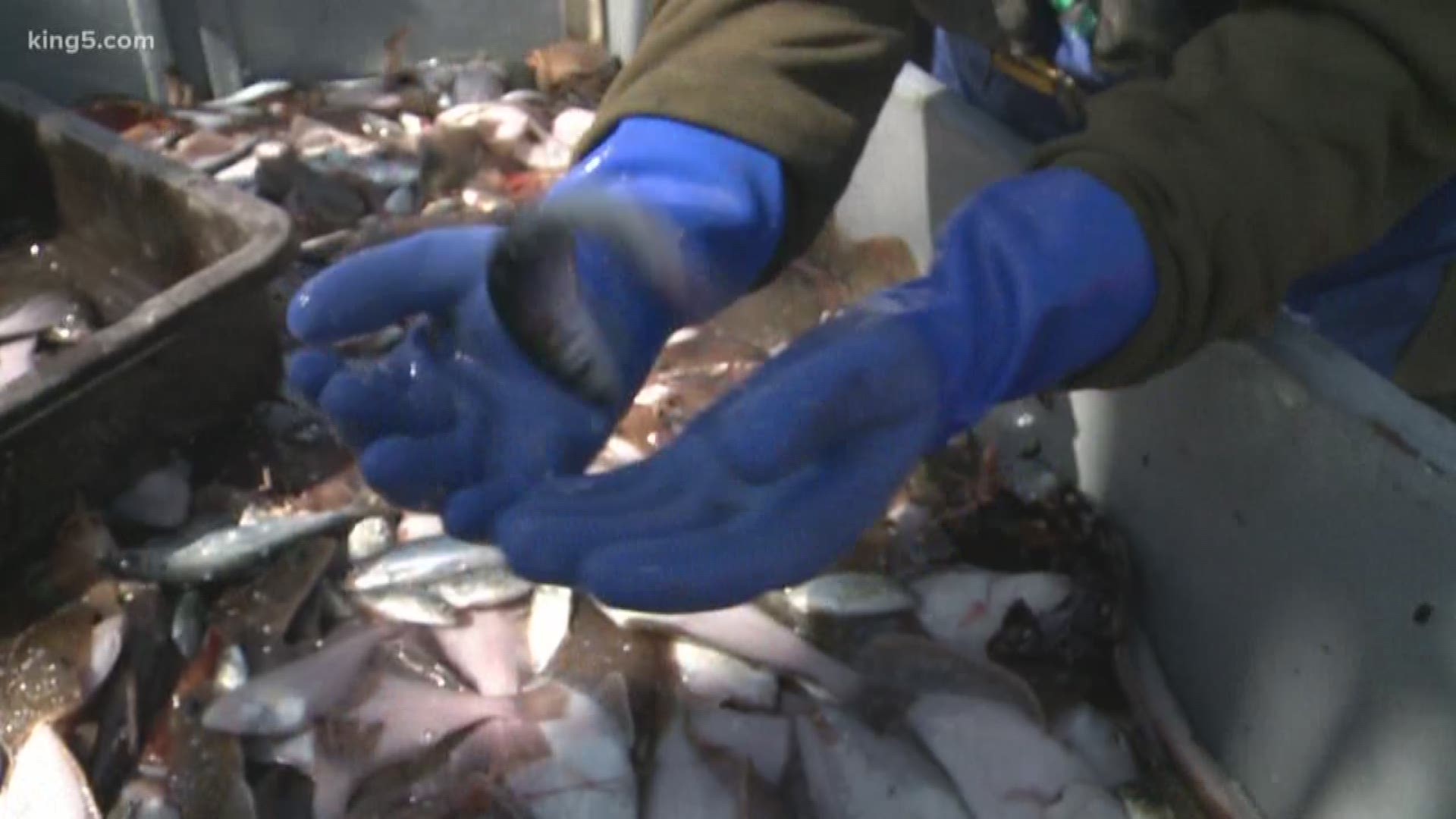SEATTLE — While Elliott Bay may look beautiful, fish surveys conducted by the Washington Department of Fish and Wildlife (WDFW) show what you see on the surface doesn’t always tell the whole tale.
WDFW Senior Research Scientist Jim West and a WDFW team have been doing fish surveys for nearly 30 years. They trawl spots around Puget Sound collecting and testing certain fish for contaminants.
The team’s current focus is on English sole, which they survey every other year.
“We have about four or five species of sole here and we are trying to pick out the ones that are called English sole," West said.
Once the fish are sorted and the rest returned to the water, the English sole are put into a holding tank.
West said researchers test species living on the seafloor for contaminates because it represents what is happening in the sediment.
“A lot of contaminants end up in the sediment. We want a species that is living there and feeding in the sediments," West explained. “In the sediments, the contaminant loads in Puget Sound are pretty much in the urban areas. We can find English sole in the middle of Puget sound that are really clean but as soon as you move into a place like Elliott Bay, they are highly contaminated.”
In seven of 10 survey sites, West said contaminants in the sediment are either not declining or getting worse.
“If we eat a fish, we are then consuming and accumulating what the fish has eaten. As you move up the food chain, you get higher and higher concentrations of these bioaccumulative contaminants,” explained WDFW Senior Research Scientist Sandie O'Neill.
O’Neill calls the sole an indicator species that give early warning signs of the health of Puget Sound.
The fish are tested for chemicals used decades ago like PCBs, along with what are called contaminants of emerging concern, like pharmaceuticals.
“When you get a prescription you go to the pharmacist. The first thing the pharmacist does is look at a list of your medications and tells you, is it OK to take this medication with that medication? The fish don’t have that option. They are getting exposed to a whole slew of them all at once,” O'Neill explained.
Researchers have found compounds that model estrogen are likely causing male fish including salmon to produce female egg yolk protein. Salmon are the favorite food for Southern Resident orcas.
“It throws off their hormone balance and it could affect their ability to reproduce," said WDFW Research Scientist Louisa Harding.
The contaminants also build up in the fat of Southern Resident killer whales and it can make them sick.
“The long-term monitoring data that we produce can be used to document the effectiveness of any management actions that are implemented," O'Neill said. "So, we are going to see declines in contaminant levels in herring and juvenile salmonids before we are going to see declines and contaminants in killer whales. They will be our early warning indicator species that things are getting better or worse.”
Join us on May 8 from 7:30 pm – 8:30 p.m. for live expert panels discussing themes central to the livelihood of Southern Residents. Visit KING5.com, our Facebook page or YouTube page to ask questions and make comments directly to those on the front lines of recovery. Learn more about our “Saving the Orcas” series here.

